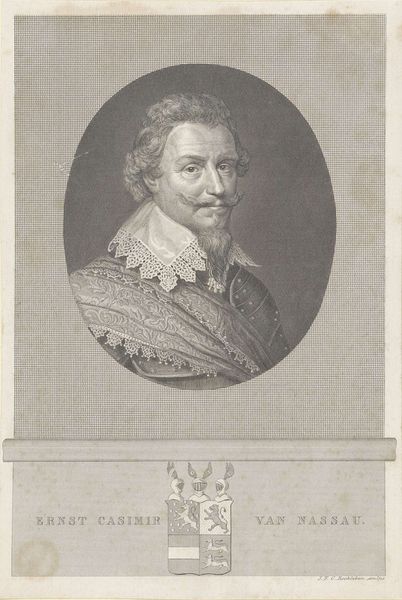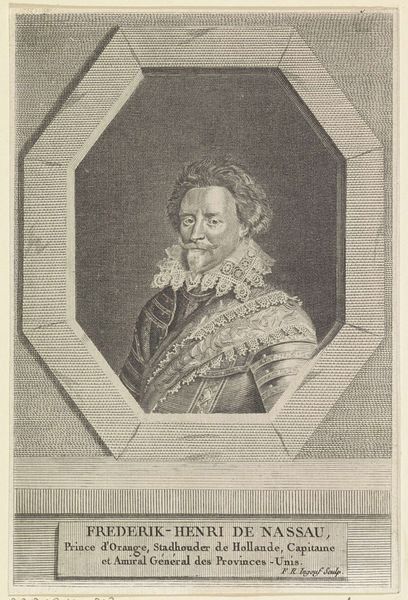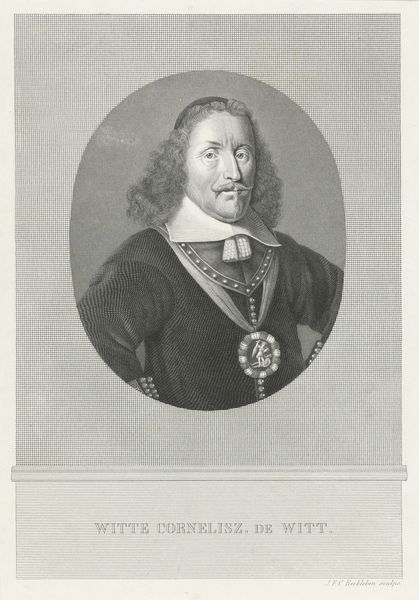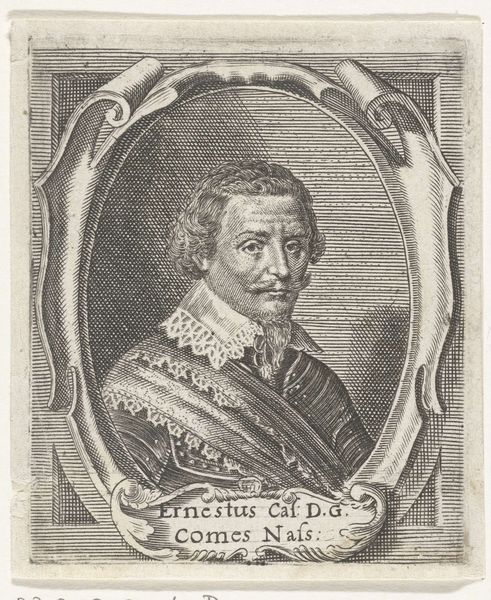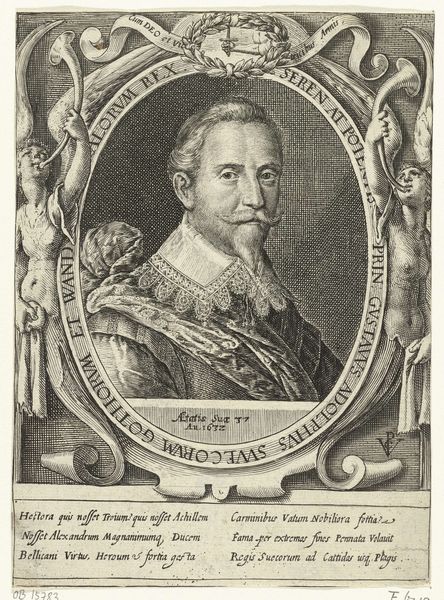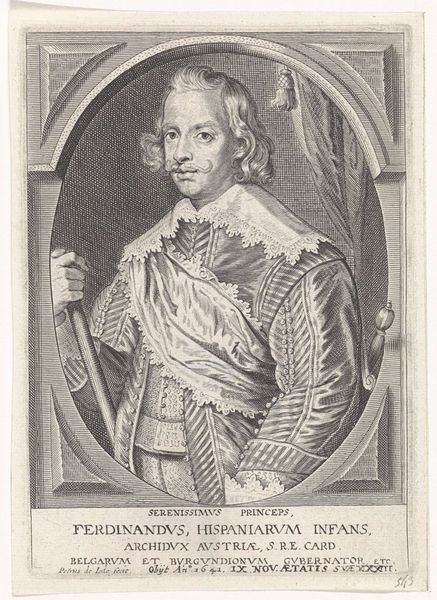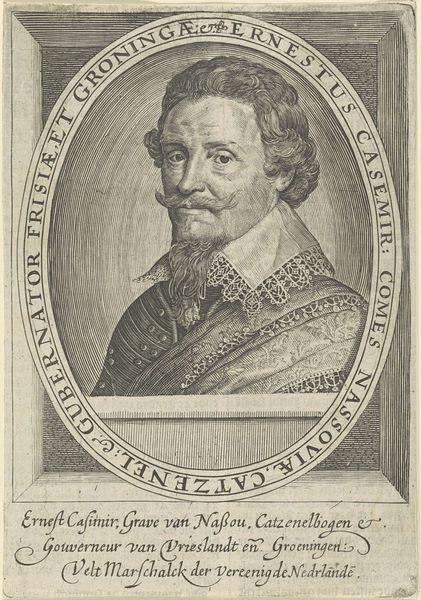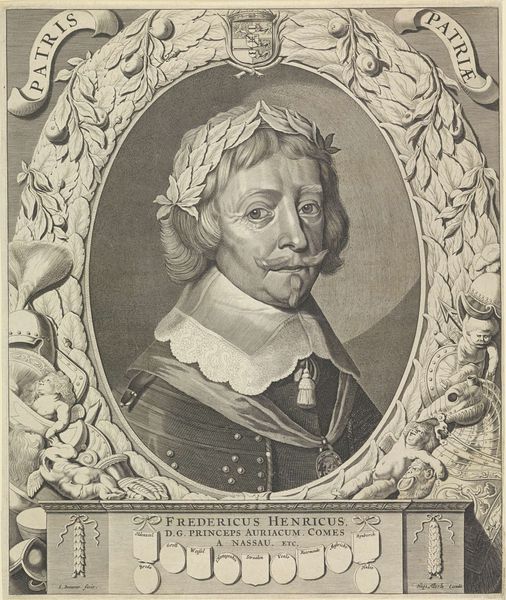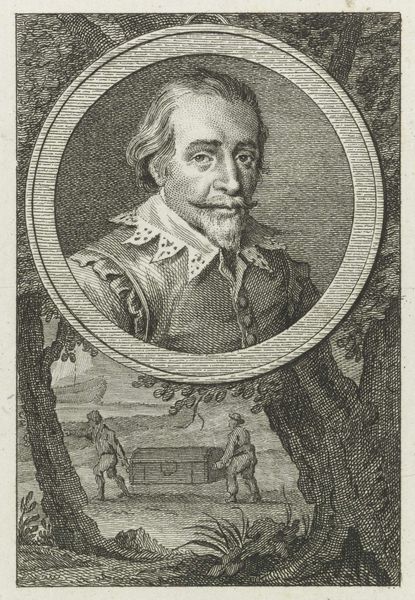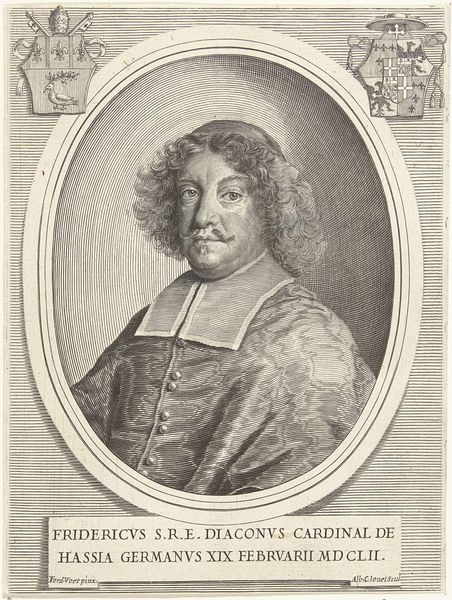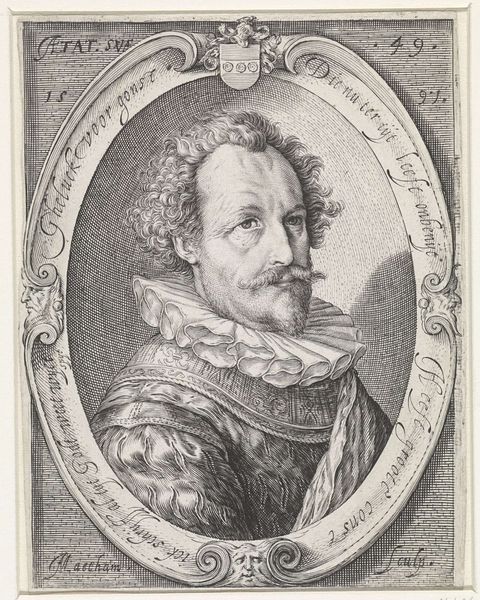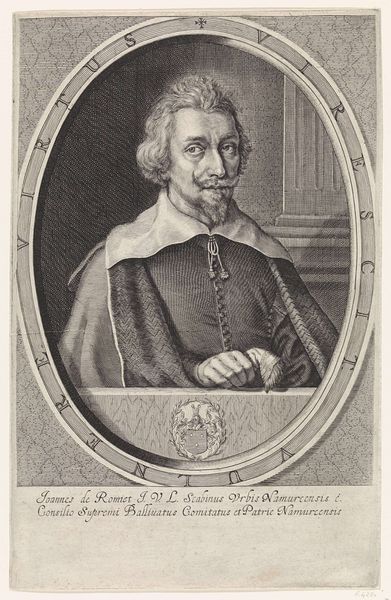
print, engraving
#
portrait
#
baroque
#
dutch-golden-age
# print
#
engraving
Dimensions: height 239 mm, width 153 mm
Copyright: Rijks Museum: Open Domain
Curator: We're looking at "Portret van Witte Cornelisz. de With", a print created between 1637 and 1641. It's attributed to Theodor Matham and currently resides in the Rijksmuseum. Editor: It has a starkness to it, doesn't it? The tight focus, the monochrome engraving... almost severe, but also very distinguished. A sense of quiet authority emanates. Curator: Indeed. This is characteristic of the Dutch Golden Age, an era marked by immense mercantile success and a burgeoning sense of national identity. Witte Cornelisz. de With was, as the inscription proclaims, Vice-Admiral of Holland and West Friesland, a powerful figure in the Dutch navy. Editor: You can definitely see that power reflected in his gaze. His garments—the lace collar, the ornamental chain—all communicate status, reinforcing that the political context and Dutch power during this era allowed De With access to resources. But, even though the inscription praises his patriotism and courage, it’s difficult to overlook the role slavery played in Dutch colonial profits. Curator: That's a vital point to raise. While this image ostensibly celebrates a national hero, it’s important to acknowledge the systemic inequalities woven into the very fabric of that era, including Dutch involvement in the transatlantic slave trade. Engravings like these played a part in constructing public image. Editor: Exactly! The accompanying text reinforces this constructed image. It tells us he faces adversity unflinchingly, fights for his fatherland with unwavering zeal. These words and visual cues were incredibly potent, bolstering social hierarchies. Curator: Yes, Matham employs classic Baroque elements. The oval frame, the dramatic lighting creating stark contrast, and the inscription contribute to that era's emphasis on capturing powerful and imposing figures. This artistic approach elevated De With’s status. Editor: It makes you wonder how many narratives are obscured or outright erased to construct a single story of national triumph and powerful leaders, narratives about marginalized groups. Curator: Absolutely. These images served as both a visual record and a political instrument. Editor: Looking at this portrait now, it really shows how art from any era reflects a society's values. Understanding this print, requires us to unpack complex narratives and engage critically with the historical forces shaping its creation. Curator: I think that’s why museums like this, constantly strive to reinterpret the context, and ask more pertinent questions about history.
Comments
No comments
Be the first to comment and join the conversation on the ultimate creative platform.
